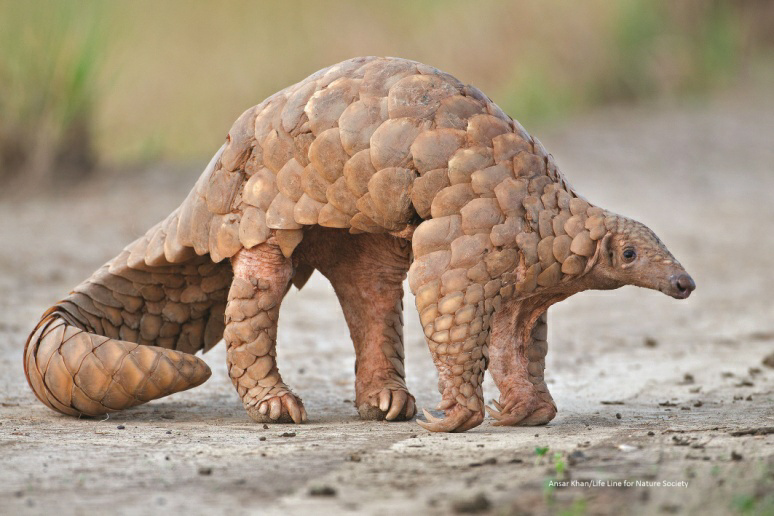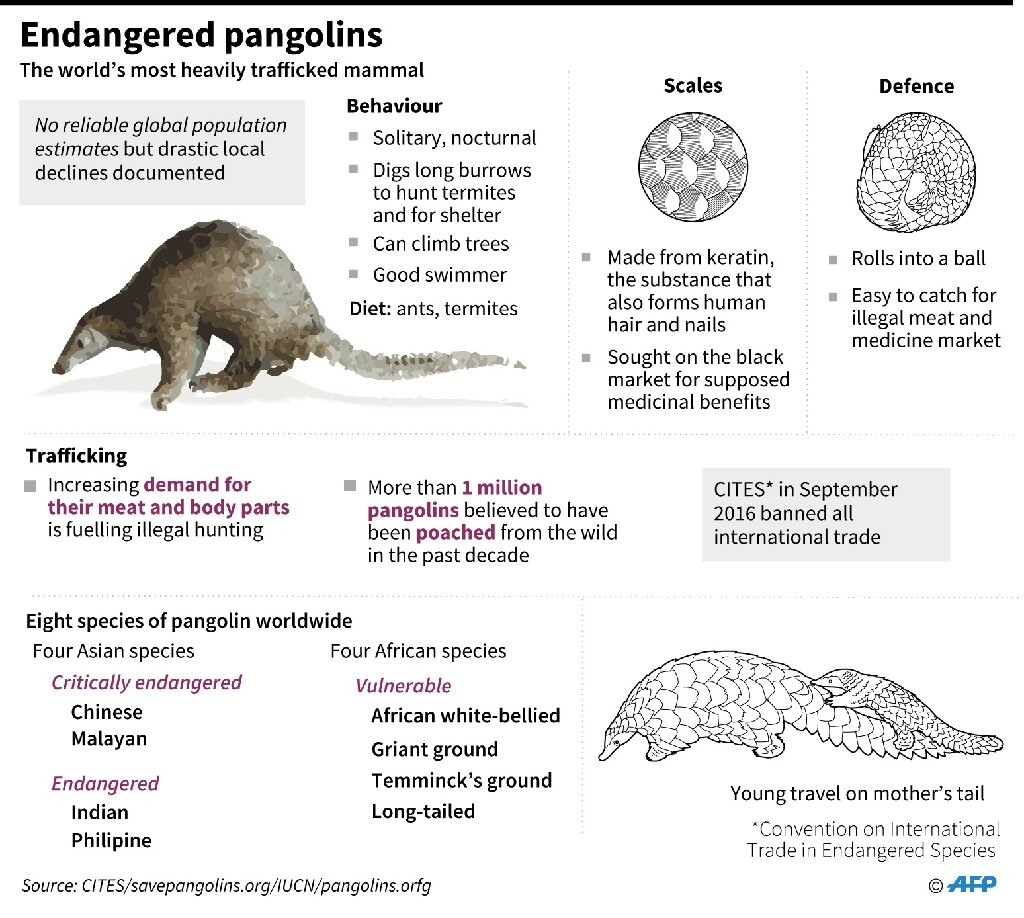Description

Copyright infringement is not intended
Context: Forest officials seized live pangolins from the Valmiki Tiger Reserve of Bihar.
About Pangolins:
- Pangolins, despite being listed in Schedule I of Wildlife (Protection) Act, 1972 continue to be the world’s most trafficked mammal.
- The Indian pangolin is the largest among eight pangolin species.
- The nocturnal animal lives in burrows and feed on ants and termites.
- It practices
- Volvation is a defensive behavior in certain animals, in which the animal rolls its own body into a ball, presenting only the hardest parts of its integument, or its spines to predators.
Pangolins in India:
- Both Indian Pangolin (Manis crassicaudata) and the Chinese Pangolin (Manis pentadactyla) are found in India.
Habitat:
Indian Pangolin
- Widely distributed in India, except the arid region, high Himalayas and the North-East.
- The species is also found in Bangladesh, Pakistan, Nepal and Sri Lanka.
Chinese Pangolin
- Found in the Himalayan foothills in Eastern Nepal, Bhutan, Northern India, North-East Bangladesh and through Southern China.
Threats to Pangolins in India:
- Hunting and poaching for use as a protein source and traditional medicine and international trade for its meat and scales in East and South East Asian countries, particularly China and Vietnam.
Protection Status:
IUCN Red List
- Indian Pangolin: Endangered
- Chinese Pangolin: Critically Endangered
- Both these species are listed under Schedule I, Part I of the Wildlife (Protection) Act, 1972.

https://www.downtoearth.org.in/news/wildlife-biodiversity/border-forest-officials-seize-live-pangolins-deer-horns-on-bihar-nepal-border-81907












